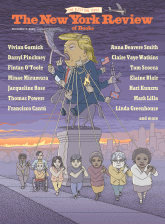When I was six, an aunt gave me a book of fairy tales in which I discovered Hans Christian Andersen’s “The Fir Tree.” The story, which I reread about a thousand times during my elementary school years, is about a little evergreen in a forest who longs to grow bigger and have things happen to him. The fir gets cut down in young adulthood to be a Christmas tree in a well-to-do house in town. He’s hung with candles, dried fruits, and toys. People admire him. Children search his branches for hidden presents. It’s the most fun he’s ever had, Christmas, and he can’t wait for it to begin again the next day. Instead he’s dragged up to an attic and left there for months with only mice for company. When the family takes him out in spring he’s brown and withered. The children gleefully crush his branches under their boots. An adult chops the tree into pieces and throws them in the fireplace. As he burns, the dismembered tree sighs for all the parts of his life that he can’t get back, even the ones that just recently had seemed quite dismal—the attic, the mice, and the children who stomped on his branches.
It’s the second half of the story that I found so dreadfully fascinating: the steep slide from Christmas to oblivion, the way that a turn of events first seemed bad, then—too late!—seemed not so bad in retrospect, when compared to the next, worse thing. These days I think of the story pretty regularly. Its bad-to-worse directionality seems to describe our national political condition as well as our future of global warming. Remember worrying about the prospect of climate destruction?
In the last month I’ve caught myself—just for a minute—looking back with something almost like wistfulness to the earlier years of the Trump administration. Back then five inspectors general whose names I did not yet know, but would come to know in 2020 as they were dismissed for no clear reason, were still in place at the State Department, Pentagon, Transportation Department, Health and Human Services Department, and the intelligence agencies. Back then, Trump had some aides with independence of mind. Coats, Kelly, McMaster—people for whom I felt no particular political affinity at the time of their appointment but who, it emerges in retrospect, checked some of Trump’s destructive impulses. It’s not much to look back on, but it’s more checks than we currently have going into a possible second administration of the president who has repeatedly encouraged violence, stirred up white supremacists, and threatened to use the military against civilian protesters.
I have a list in my mind of the actions I can take, and have taken, to move elected representatives further toward the left, where I (with a majority of Americans) would like them to be on most issues. I can vote, march, occupy, canvass, and text bank for candidates I support. Follow obscure local elections, call elected representatives, persuade people I know to do the same. These actions can, and have, turned purple districts blue and brought progressive candidates to blue seats. But when it comes to shoring up nonpartisan institutions and practices, watchdog panels and oversight mechanisms, I have few levers to pull, no interface with these parts of democratic government. Their functioning until recently has seemed quiet and barely perceptible, like the involuntary smooth muscles of the body: you don’t feel their fluctuations, and if you do it’s often a bad sign. If you’ve learned the name of an inspector general in the Trump years, it means he probably won’t be holding his position much longer.
The dread of post-election uncertainty and violence is intense among everyone I talk with (a number shrunk by pandemic lockdown to about three people a day who are not immediately related to me). I wish it were already November 3. I can’t wait to start getting it over with. The vote that I’m about to cast feels like an instrument ridiculously too small and too blunt for our overlapping crises. I can cast it only once, and only from California, a safe blue state currently turning eerie shades of orange, yellow, and gray as our trees burn. On a hot day in late September, I walked with my kids to a federal courthouse in downtown LA. I don’t usually get emotional about politics (unless you count seething anger), but when we stuck a bunch of flowers in the chain-link fence enclosing the courthouse and said rest in peace, Justice Ginsburg, I was glad to have my sunglasses on to cover what turned out to be unexpected physiological manifestations of sadness around my eyes. Things seem pretty bad right now. I hope they will still seem bad in retrospect.
Advertisement



